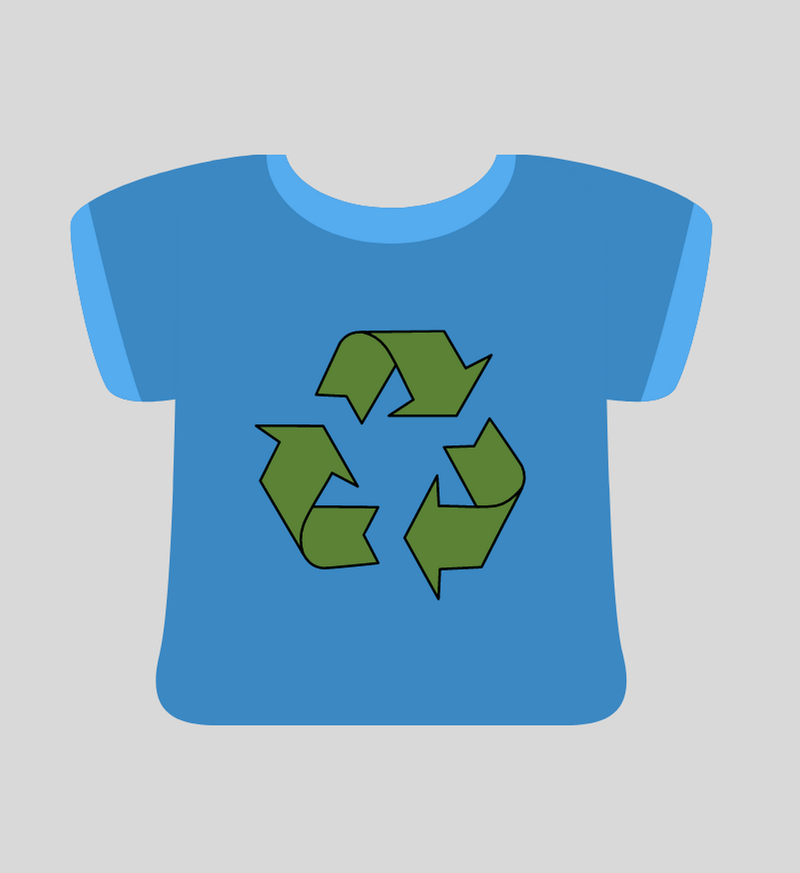I have discovered many techniques to improve the sustainability of my clothing purchases over the past few years. Clothing and textiles are a massive contributor to environmental issues. According to the United Nations, the fashion industry generates ‘8-10% of the world’s greenhouse gas emissions’! [1] The fashion industry uses copious amounts of water, and many fabrics are made of plastics, which can shed microplastics when washed. [2] Planet Ark cites an average of 23kg of clothing per person is discarded into landfill each year! [3] Clearly, there are environmental benefits to be gained by rethinking how we purchase and dispose of our clothes.
I have switched to buying secondhand clothing for myself and my kids, wherever possible. My husband has also drifted towards this switch too, although secondhand underpants remain a step too far for him (and the rest of us)! I keep an eye on Facebook Marketplace and Gumtree for items we need, and source good condition pre-loved clothing for our family to re-use. Once the kids have outgrown the clothes, I put them back onto the secondhand marketplace or donate them for another family to use. This extends the use of our clothes, and reduces the packaging waste and energy use associated with manufacturing and purchasing new clothes.
When purchasing clothes, regardless of whether they are second-hand, the most effective sustainability technique is to only buy things that you need. A good way to keep tabs on this is to ask the question ‘do I need this or want this’? If the answer is ‘want’ then there is no ‘need’ to buy it. My other technique is to wear clothes until they break. While we all like to treat ourselves with something new from time-to-time, breaking the habit of keeping up with the latest trends is a powerful way to conserve our planet’s resources and take a more practical approach to fashion.
The burning question now is, what do you do with clothing that is damaged or beyond repair? Luckily there are some great options available that don’t involve ditching them into landfill.
Repair
If you have sewing skills, try to mend your clothes. If you don’t have the equipment or knowledge, attempt to outsource your repairs. Perhaps a friend or family member can help, a local tailor, or you may be lucky enough to have a Repair Café in your community. My local community has a Repair Café run by See Change. Volunteers operate the café once a month where people can take items of clothing for free repairs. They also offer many other repair services including electrical, mechanical, gardening tools, IT and jewellery repairs.
Upcycle
Another great option is to upcycle your clothes. I have done this on a few occasions now. My first attempt followed a trip to the zoo. My kids saw toy fabric snakes which they desperately wanted. However, using my principals of not buying new items, I instead promised to make them their very own snakes out of recycled clothing. We searched through a bag of old clothes that were too damaged to donate. The boys chose a selection of pants and onesies to make their new toy snakes from. I used the pants legs for the bodies, and the feet of a onesie made a great head. For the stuffing, I filled them with old socks and undies. And to finish them off, I gave them button eyes taken from old clothing. The kids were thrilled with their new toys, and I was pleased to reuse these old clothes in preference to tossing them into landfill.

My next upcycle project started when my son asked for a library bag to take to school. For this project, I used the leg of a pair of jeans. It was super quick to make on the overlocker. The end result being a heavy-duty library bag to accommodate my son’s love of books.

Recycle
If repairing and upcycling are not suitable, luckily there are options to recycle your old clothes. There are collection points available at the following stores:
- H&M – any brand of clothes and textiles;
- Zara – any brand, including clothes, linen, shoes, accessories and jewellery;
- Sheridan – any brand of sheets, towels and quilt covers;
- Country Road – County Road brand only; and
- UNIQLO – UNIQLO brand only.
If you are after home collection, UPPAREL provides this service for a fee. They collect clean shoes, clothes and linen in any condition.
The Tread Lightly recycling initiative offers collection points across the country for old sports shoes.
Clothing waste is a big environmental issue. However, there are many ways we can all contribute by making small changes to our clothing purchasing and disposal habits. Think about some small changes you can make to suit your family, and you will be making your own ‘Local Impact’ on the environment.
References
- United Nations, ActNow for Zero-Waste Fashion, accessed 6 August 2022, available: https://www.un.org/sustainabledevelopment/blog/2019/08/actnow-for-zero-waste-fashion/#_edn2
- Ellen Macarthur Foundation, A New Textiles Economy: Redesigning Fashion’s Future, accessed 6 August 2022, available: https://emf.thirdlight.com/link/2axvc7eob8zx-za4ule/@/preview/1?o
- Planet Ark, Tackling Australia’s Textile Waste, accessed 6 August 2022, available: https://www.planetark.org/newsroom/news/tackling-australias-textile-waste
Enter your email address below to get new content delivered directly to your inbox!


One thought on “Sustainable Clothing”